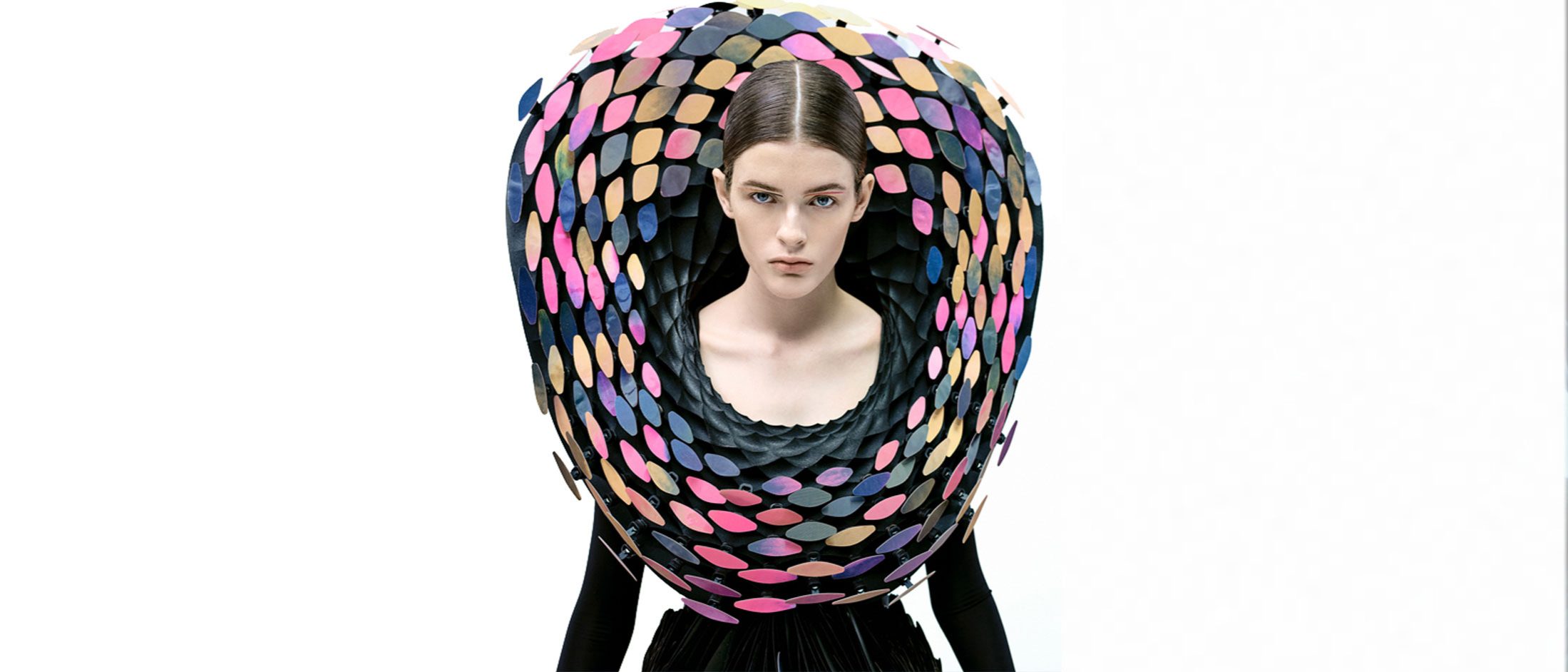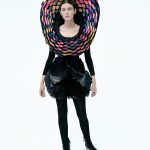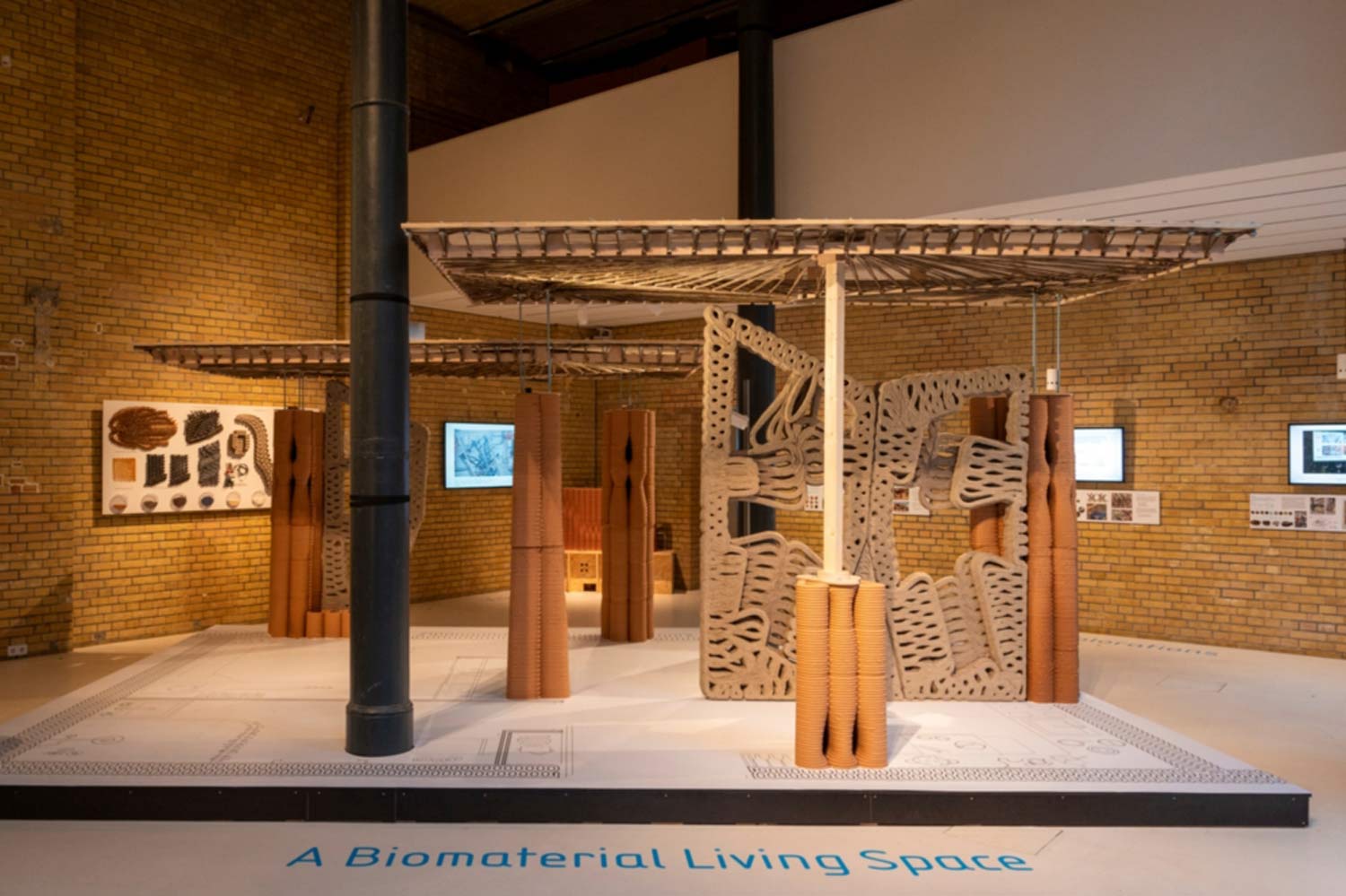Iridescence, Behnaz Farahi’s Interactive Collar, Uses Hundreds of Actuators and Vision-Activated Technology to Follow Your Gaze and React with Life-Like Behavior. Created by renowned designer and technologist Behnaz Farahi, the Iridescence is an interactive, 3D-printed, and emotive collar, uses hundreds of actuators and vision-activated technology to follow your gaze and react with life-like behavior. The project was commissioned by the Museum of Science and Industry Chicago for a 15-month exhibition entitled “Wired to Wear” starting from March 21, 2019.
Text description provided by designer. What if our clothing could sense the movement and emotions of those around us? How might technology expand our sensory experience and influence our social interactions? And in what ways could our clothing become a form of non-verbal communication, expressed through changes in color and texture?
The hummingbird is a remarkable creature. The male Anna’s hummingbird , for example, has feathers around his throat that appear at one moment completely green. With a twist of his head, however, he can turn them into an iridescent pink. He does this by exploiting the capacity of the microscopic structure of the feather to refract light like a prism, so that the feathers take on different shimmering hues, when viewed from different angles. This is how the Anna’s hummingbird attracts mates during his spectacular displays of aerial courtship.
Iridescence is an interactive collar, inspired by the gorget of the Anna’s hummingbird. It is equipped with a facial tracking camera and an array of 200 rotating quills. The custom-made quills flip their colors and start to make patterns, in response to the movement of onlookers and their facial expressions.
This project addresses a number of challenging technical issues. Firstly, the design and fabrication of color changing materials was informed by the logic of lenticular behavior. Not dissimilar to how light is refracted by the feathers of a hummingbird, Iridescence uses lenticular lenses laminated onto an array flat colored surfaces to provide color changing effects. Secondly, the rotation of the quills is controlled by a series of custom made electro-magnetic actuators, carefully designed to withstand the natural wear and tear of being part of an exhibition that lasts 15 months. These actuators can be easily removed and replaced by substitute actuators, if any of them fail. Another major engineering task has been to design a PCB driver boards to control and orchestrate the actuator’s behavior.
The goal is to explore how wearables can become not only a vehicle for self-expression, but also an extension of our sensory experience of the world. The advantage of using such an innovation can be to gather visual information such as people’s facial expressions for those who have difficulties receiving or decoding this information such as those who suffers from visual impairment or autism. Iridescence can also express non-verbally and mimic those information, through its dynamic behavior. To make this work, we are borrowing from the latest advancement in AI facial expression tracking technology and embed it in bio-inspired material systems.
Overall, this project is an attempt to explore the possibilities afforded by AI facial tracking technology and the dynamic behavior of a smart fashion item. The intention is to address psychosocial issues involving emotions and sensations, and to see how these technologies might inform social interaction.
The making of Iridescence was very iterative and experimental. It took many months to from the initial inspiration to the final product.
Project Name : Iridescence
Lead Designer : Behnaz Farahi
Electrical : Paolo Salvagione
Mechanical : Behnaz Farahi, Paolo Salvagione
Software : Julian Ceipek
Design Assistant : Hao Wen
Fashion Assistant : Merced Jackson
Fabrication Assistant : Hao Wen, Valeri Neri, Kayla Paredes, Ryan Chavez
Phogography : Kristina Varaksina
About Behnaz Farahi :
By weaving emerging technologies into contemporary art, fashion and architecture, Behnaz Farahi explores the potential of interactive environments and their relationship to the human body. Her work has been exhibited internationally at Ars Electronica, Linz and Context Art Miami, and has been featured in WIRED, BBC, CNN, The Guardian, and many more. Behnaz has worked with Adidas, Autodesk, Fuksas Studio, and 3DSystems / will-i-am. She has also collaborated on two NASA-funded research projects developing robotic fabrication technology to 3D print structures on the Moon and Mars. Currently she is an Annenberg Fellow and Ph.D. candidate at the University of Southern California. She has a Bachelor’s and two master’s degrees in architecture.
Neri Oxman’s Wearable structures for Interplanetary Voyages – Parametric Architecture
Neri Oxman’s team at MIT Media Lab Creates Wearable 3D-printed Skins for Interplanetary Voyages Related Posts Wanderers, An Astrobiological Exploration Traveling to destinations beyond planet Earth involves voyages to hostile landscapes and deadly environments. Crushing gravity, amonious air, prolonged darkness, and temperatures that would boil glass or freeze carbon dioxide, all but eliminate the …
Dragonfly 3D Printed Dress – Parametric Architecture
Dragonfly, is a 3D printed dress designed and fabricated by two Russian artists Oleg Soroko of After Form and Mintsev Kirill . The collaboration between two artists combined two major topics of fashion and parametric design . Designed and 3d printed in Moscow , Russia , Dragonfly consists from two main parts.






















































